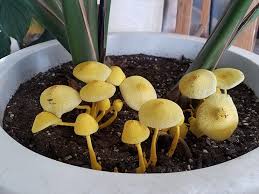Introduction
Welcome to our comprehensive guide on what to do when you find mushrooms growing in your houseplants. As avid gardeners and plant enthusiasts, we understand the concern and frustration that comes with unexpected fungal growth. In this article, we will delve into the causes of mushrooms in houseplants, the potential risks they pose, and most importantly, how to effectively address and prevent this issue.
Understanding the Causes
Mushrooms in houseplants can be attributed to various factors, primarily stemming from the soil environment. Moisture, nutrient-rich soil, and poor drainage are common contributors to fungal growth. Additionally, using contaminated potting mix or reusing old soil can introduce fungal spores into your plants’ environment.
Risks Associated with Mushroom Growth
While mushrooms themselves may not harm your plants directly, they can indicate underlying issues that may affect plant health. Excessive moisture and poor soil aeration can lead to root rot, which ultimately affects the overall vitality of your plants. Moreover, some mushrooms may release spores that could be allergenic or irritating to individuals with respiratory conditions.
Steps to Address Mushroom Growth
Remove Mushrooms Immediately: Upon discovering mushrooms, carefully remove them from the soil surface to prevent further spore dispersal.
Adjust Watering Practices: Evaluate your watering routine and ensure that you are not overwatering your plants. Allow the soil to dry out slightly between waterings to discourage fungal growth.
Improve Soil Drainage: If your plants’ soil retains too much moisture, consider repotting them using a well-draining potting mix. Adding perlite or coarse sand can also aid in improving soil aeration.
Monitor Light and Airflow: Ensure that your houseplants receive adequate light and airflow, as damp, poorly ventilated environments can promote fungal proliferation.
Sterilize Tools and Containers: If you suspect that your gardening tools or pots may be contaminated, thoroughly sterilize them before using them again to prevent fungal spread.
Preventative Measures
To prevent future mushroom growth in your houseplants, consider implementing the following practices:
Use sterile potting mix from reputable sources.
Avoid over-fertilizing, as excess nutrients can promote fungal activity.
Regularly inspect your plants for signs of stress or disease.
Maintain optimal humidity levels by using a humidity meter or placing plants in well-ventilated areas.
Consider using organic fungicides as a preventive measure, especially in high-risk environments.
Conclusion
Dealing with mushrooms in houseplants requires a proactive approach focused on addressing underlying factors and implementing preventive measures. By understanding the causes, risks, and effective solutions outlined in this guide, you can ensure the health and vitality of your indoor plants.

